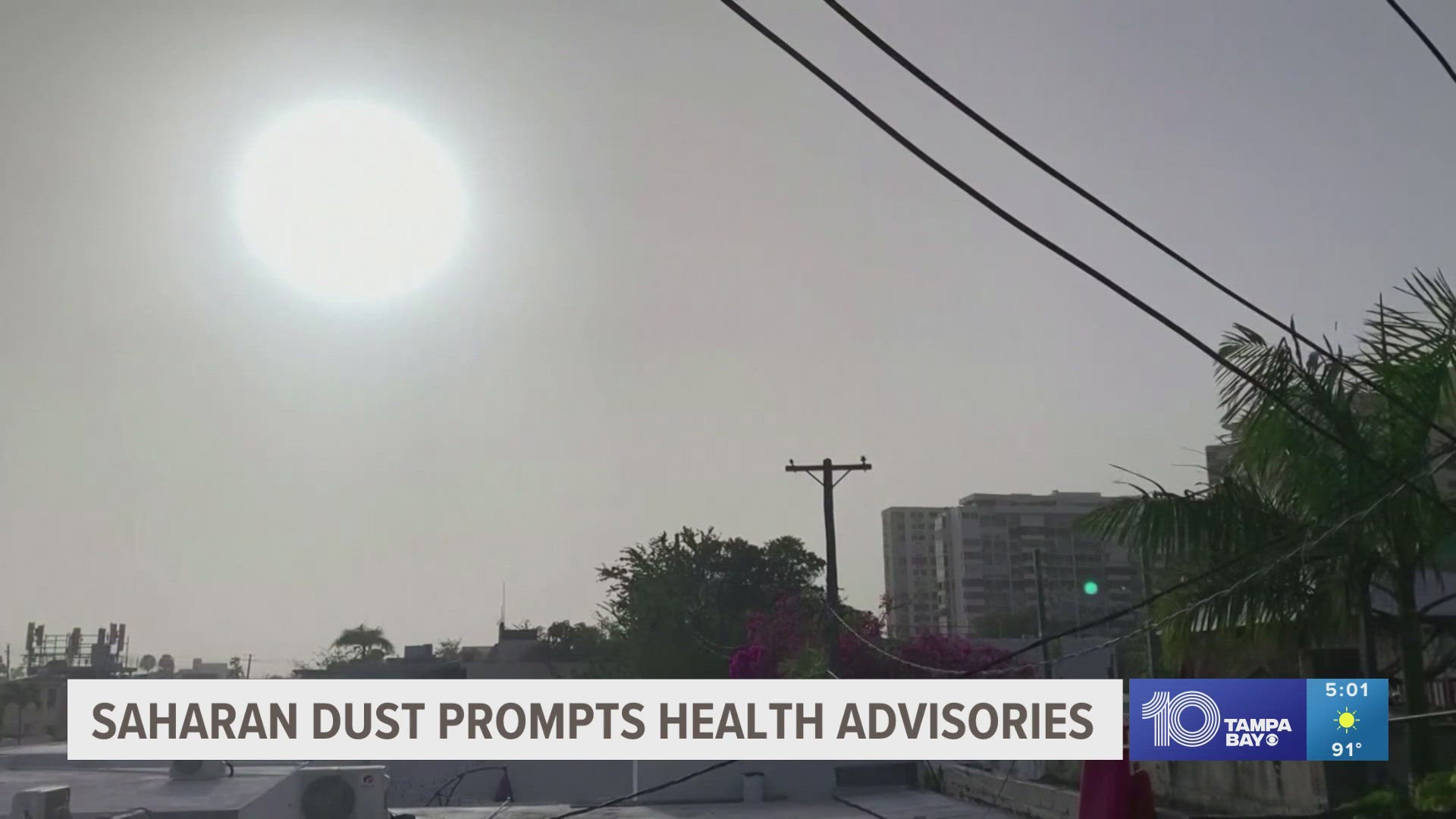PINELLAS COUNTY, Fla. — Seeing hazy skies? Saharan dust has made its way across the Atlantic, causing the haze and bringing potentially spectacular sunrises and sunsets.
But with the haze comes the potential for poor air quality, because of this and the Saharan dust's possible impact on people with respiratory sensitivities, Pinellas and Hillsborough County air quality officials issued an Air Pollution Precautionary Advisory. The advisory takes effect Wednesday, July 10 through Friday, July 12.
Elevated levels of the pollutant Particulate Matter of 2.5 micrometers or less (PM2) have already been detected in the air. Air Quality Index is expected to reach high moderate levels between 51-100. If AQI values reach 101-150, that becomes unhealthy for sensitive groups such as people with asthma, older adults, children, teenagers and active outdoors.
For some in the area, the particulate plume has made breathing a lot tougher.
“I'm super surprised. I had no idea that's what it is,” said Isabelle Lima, who was shocked to find out that the unusual haze she’d been noticing all day was actually Saharan dust. “Crazy, I never thought it would make it this far over here.”
Officials say these are the same types of warnings you might more commonly see in the event of smoke or high ozone levels in the air for people with chronic breathing issues.
“Such as asthma,” said Tony Fabrizio, a spokesman for Pinellas County. “Older adults, children, or teenagers. People who are active outdoors Should really consider reducing their prolonged or heavy outdoor exertion,” Fabrizio said.
County officials advise people who could be most affected to consider reducing time outdoors or refrain from heavy exertion outdoors if possible.
There is the possibility the forecast for Saharan dust impacting the areas could change, leading to the advisory being lifted sooner, officials said in the news release.
What is Saharan dust?
The Saharan Air Layer (SAL), commonly known as Saharan dust, originates along the southern edge of the Sahara Desert in Africa. Tropical waves in the lower-to-middle atmosphere lift large amounts of dust into the atmosphere and carry it across the Atlantic, according to University of Miami hurricane researcher Dr. Jason Dunion.
The Saharan dust is usually a 2 to 2.5-mile-thick layer of the atmosphere that starts about a mile, or 5,280 feet, above Earth's surface.
Dunion says the Saharan Air Layer usually becomes most active starting mid-June and peaks from late June to mid-August. During the peak period for Saharan dust activity, the SAL can reach as far west as Florida, Central America and even Texas.
How can I stay cool this summer in Tampa Bay?
Temperatures could reach record highs in the Tampa Bay area, with inland cities soaring to "feels-like" temps in the 100s.
If you can, health officials recommend staying inside where it's cool, especially during the early afternoon hours between 2-3 p.m. when temperatures peak.
Before that, here are five (free) preventative measures you can take, starting right now, to avoid overheating.
- Drink plenty of water
- Dress appropriately
- Use cool wash rags
- Head to the water
- Place ice buckets in front of a fan
When it comes to keeping your family safe, you'll want to know the signs of heat illness or worse, heat stroke.
Symptoms of heat exhaustion include excessive sweating, nausea, a weak pulse, dizziness, muscle cramps and cool, clammy skin.
If this happens, get to a cool place and drink water.
Click here for more tips on staying cool in the Tampa Bay area.

